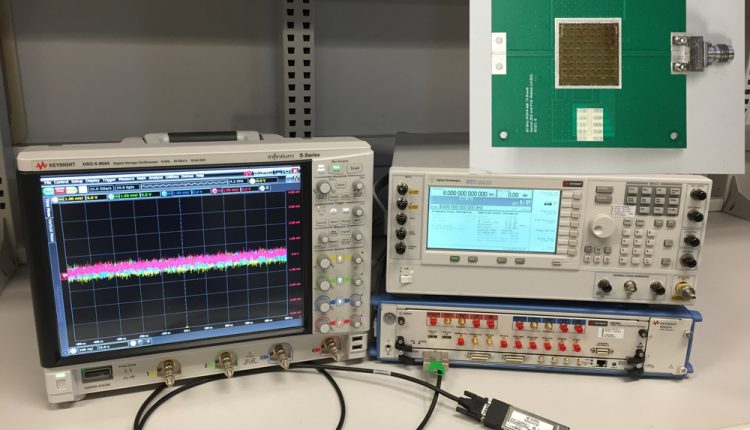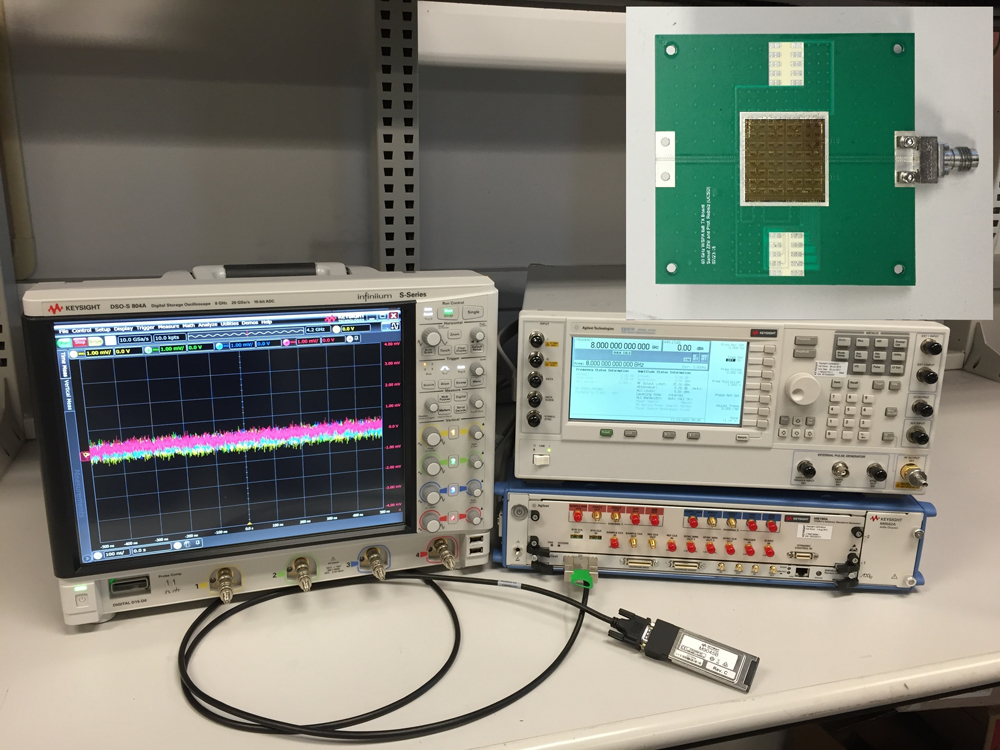
World’s first 5G communication has been demonstrated
Keysight Technologies teamed up with The University of California, San Diego (UCSD) to prove for the first time that 5G communication is not only possible, but capable of delivering record performance.
Keysight and and UCSD demonstrated a 64 (8 x 8) and 256-element (16 x 16), 60-GHz silicon wafer-scale phased-array transmitter with integrated high-efficiency antennas for Gbps communications at 100 to 200 meters.
The recent development was built on earlier work conducted between the UCSD and TowerJazz, resulting in the industry’s first 64- and 256-element system-on-a chip (SoC) phased arrays operating at 60-GHz.

Each wafer-scale SoC comprises a 60-GHz source, amplifiers, distribution network, phase shifters, voltage controlled amplifiers and high-efficiency on-chip antennas. The chips were designed to meet the needs of 5G high-performance Gbps data-rate communication systems with beamforming capabilities and to be used in aerospace and defense applications.
After UCSD developed the phased-array SoCs, Keysight joined in and the two set out to prove they could the SoCs in a communications link.
Keysight provided numerous instruments to assist UCSD in the development of the link like the M8190A arbitrary waveform generator, E8267D PSG vector signal generator and the DSOS804A Infiniium S-Series high-definition oscilloscope with 10-bit ADC.
“UCSD, a world leader in low-cost SiGe and CMOS phased-arrays, has demonstrated several phased-array systems operating in the 6- to 100-GHz range and developed the first affordable wafer-scale 64- and 256-element phased-array transmitter for 5G communications,” said Gabriel M. Rebeiz, distinguished professor and wireless communications industry chair at UCSD.
“We are so proud to have collaborated with UCSD on the 5G communication link. It not only represents a significant advance in the realization of 5G, but also paves the way for future research and development of millimeter-wave communication systems,” said Mark Pierpont, vice president and general manager Keysight’s Communications Measurement Solutions.
The 60-GHz 802.11ad waveform UCSD required for the development effort was generated using Keysight’s Signal Studio software and analyzed using its 89600 VSA software. Keysight’s 81199A Wideband Waveform Center software also proved valuable, helping UCSD link transmit and receive, apply digital pre-distortion and improve error-vector-magnitude.

Comments are closed, but trackbacks and pingbacks are open.